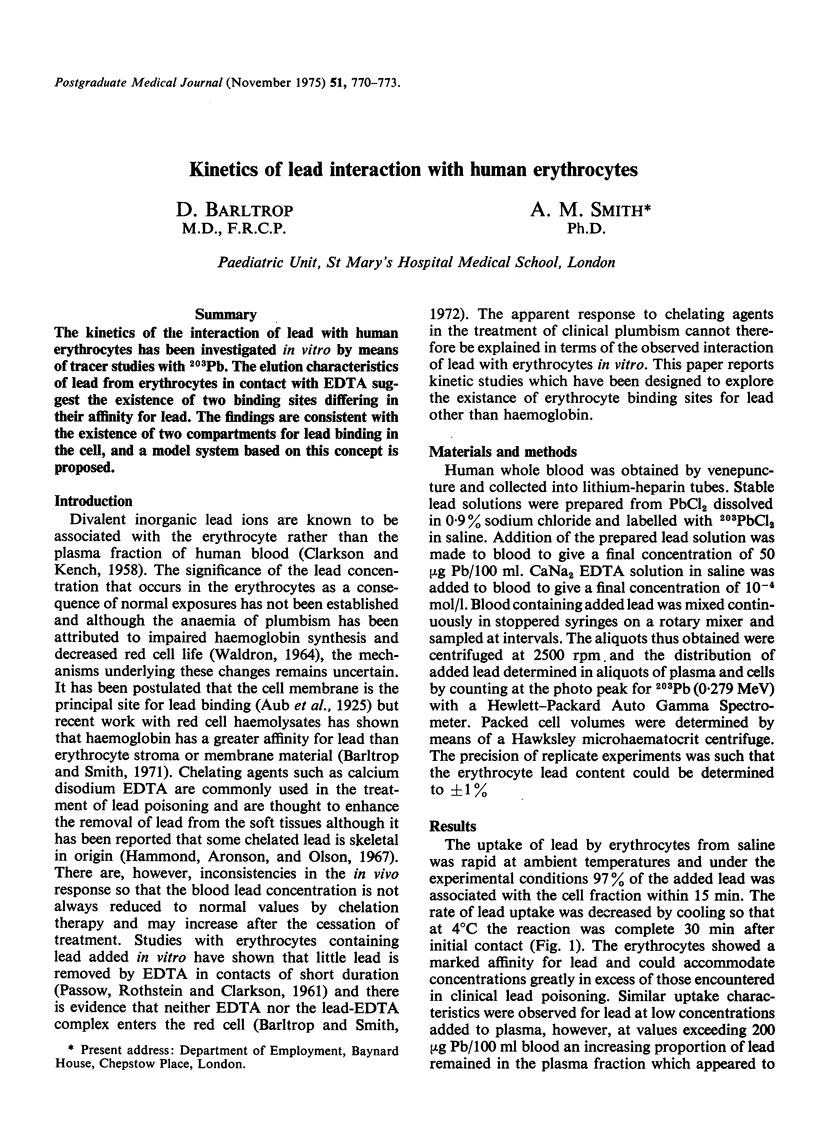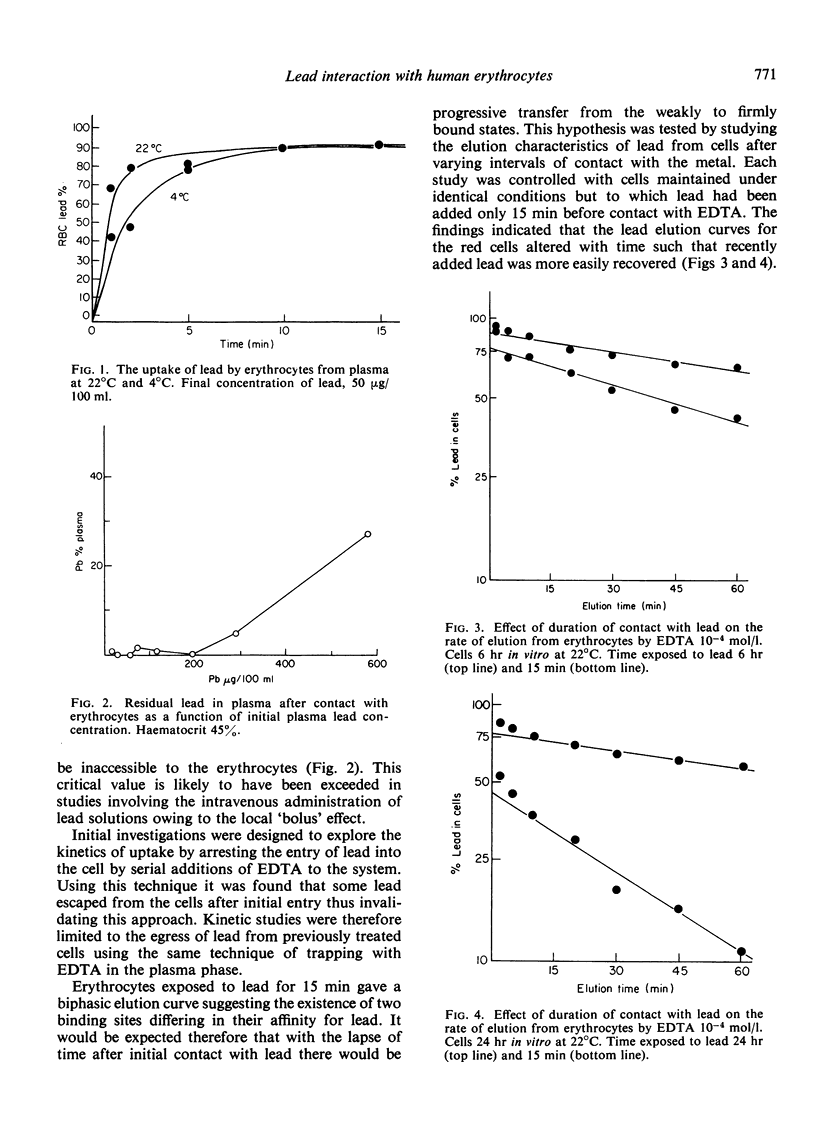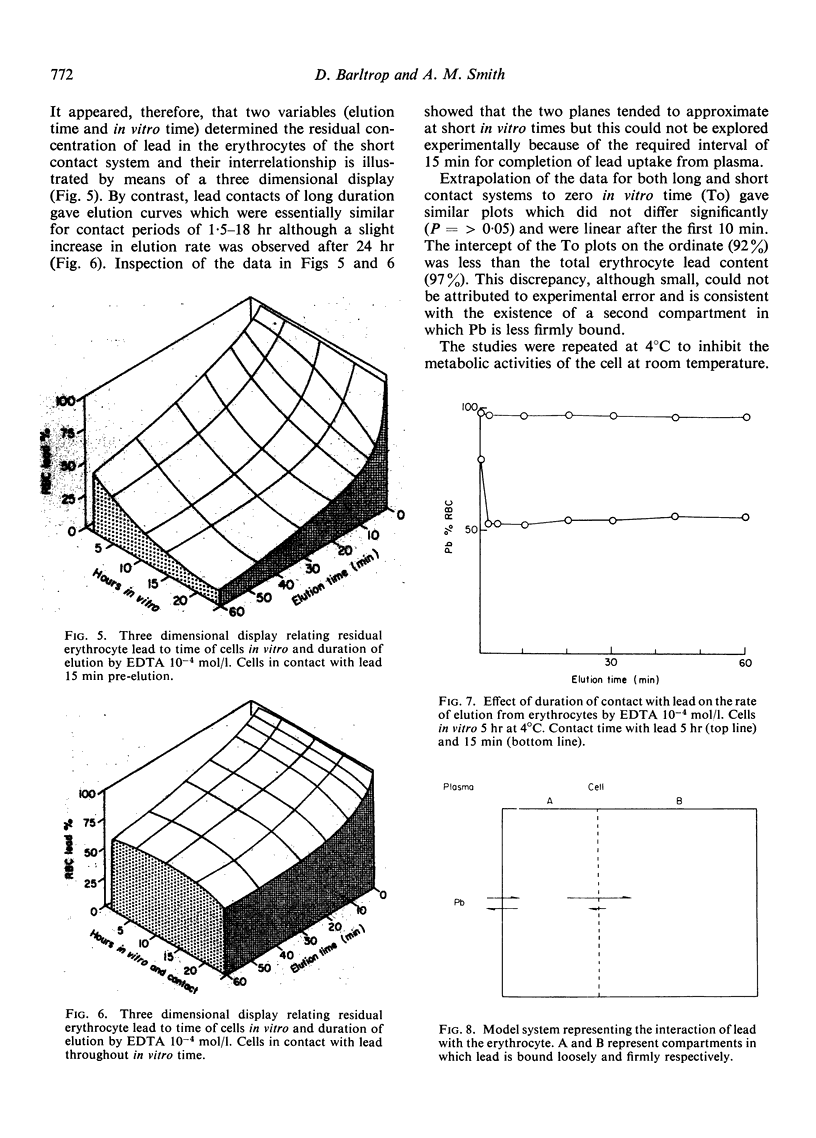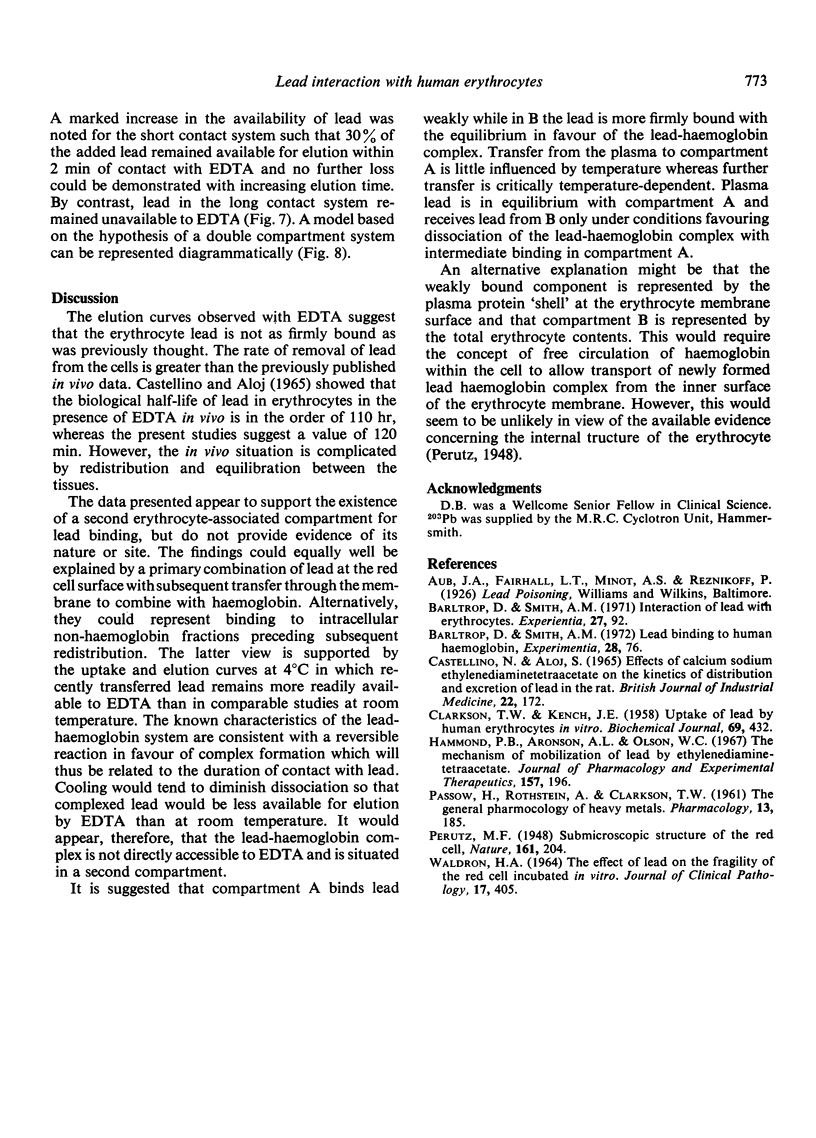Abstract
The kinetics of the interaction of lead with human erythrocytes has been investigated in vitro by means of tracer studies with 203Pb. The elution characteristics of lead from erythrocytes in contact with EDTA suggest the existence of two binding sites differing in their affinity for lead. The findings are consistent with the existence of two compartments for lead binding in the cell, and a model system based on this concept is proposed.
Full text
PDF



Selected References
These references are in PubMed. This may not be the complete list of references from this article.
- Barltrop D., Smith A. Interaction of lead with erythrocytes. Experientia. 1971 Jan 15;27(1):92–93. doi: 10.1007/BF02137760. [DOI] [PubMed] [Google Scholar]
- CLARKSON T. W., KENCH J. E. Uptake of lead by human erythrocytes in vitro. Biochem J. 1958 Jul;69(3):432–439. doi: 10.1042/bj0690432. [DOI] [PMC free article] [PubMed] [Google Scholar]
- Hammond P. B., Aronson A. L., Olson W. C. The mechanism of mobilization of lead by ethylenediaminetetraacetate. J Pharmacol Exp Ther. 1967 Jul;157(1):196–206. [PubMed] [Google Scholar]
- PASSOW H., ROTHSTEIN A., CLARKSON T. W. The general pharmacology of the heavy metals. Pharmacol Rev. 1961 Jun;13:185–224. [PubMed] [Google Scholar]
- WALDRON H. A. THE EFFECT OF LEAD ON THE FRAGILITY OF THE RED CELL INCUBATED IN VITRO. J Clin Pathol. 1964 Jul;17:405–406. doi: 10.1136/jcp.17.4.405. [DOI] [PMC free article] [PubMed] [Google Scholar]


